Bonsai professionals in Japan commonly follow one of two paths – they can become bonsai sellers or bonsai creators. The proprietor of Aichi-en Bonsai Nursery in Nagoya belongs to the latter group. Junichiro Tanaka is a fourth generation bonsai professional. His great-grandfather Sukijiro started the nursery at 17 years old by making the bold move of planting 1,000 ume. It’s a fun story – you can read about it on the Aichi-en website.
Although Aichi-en is best known for black pine, Tanaka is equally skilled with deciduous varieties. Here are some photos from Boon Manakitivipart’s visit to the garden earlier this year.

Momiji
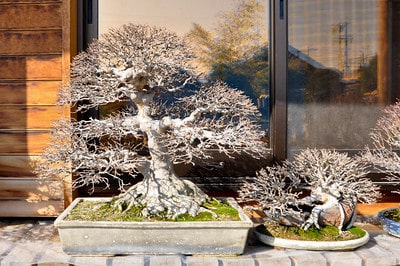
Kaede
The sheer number of trees at Aichi-en is impressive. I have yet to visit the nursery, but I’m planning to visit soon.
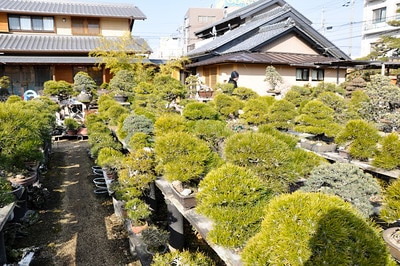
A sea of pines
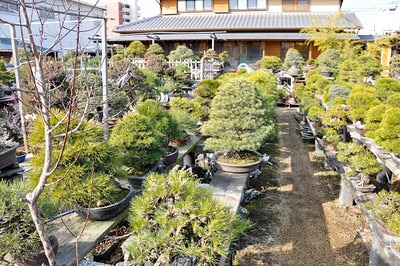
More pines
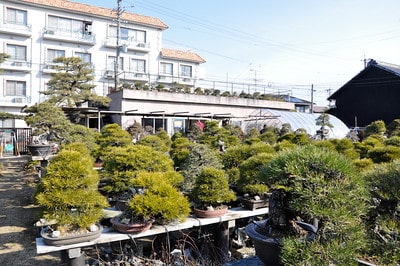
Yet more pines
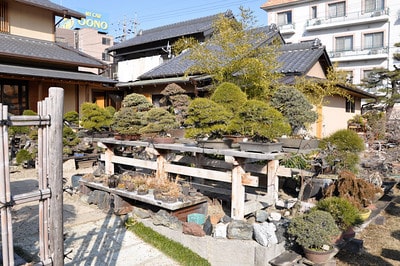
And another conifer bench
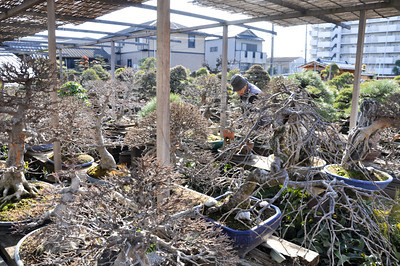
Deciduous bonsai
How does Tanaka take care of so many trees? With help from the likes of Peter Tea, his newest apprentice. Peter has been writing a fantastic blog about the experience – I highly recommend following along at peterteabonsai.wordpress.com.
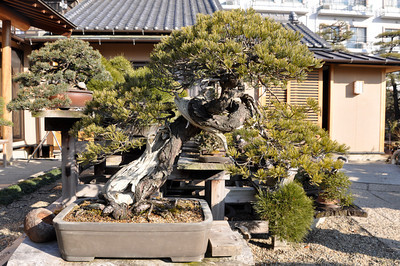
Goyomatsu with amazing movement
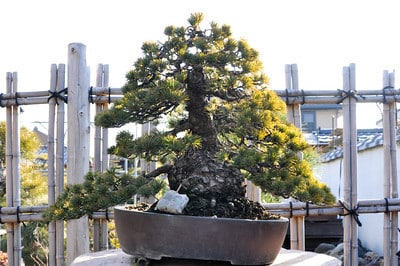
Goyomatsu
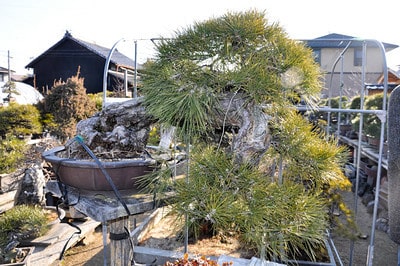
An interesting Kuromatsu
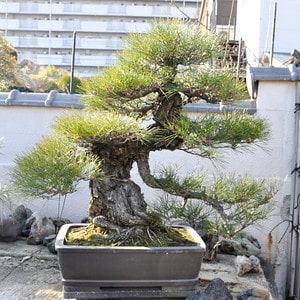
Kuromatsu with not one but two right angles in the trunk – you don’t see that every day
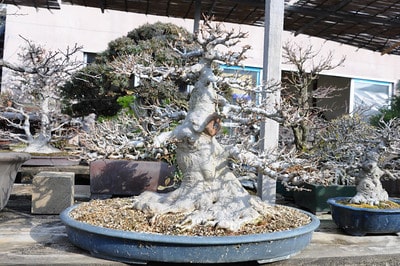
Kaede
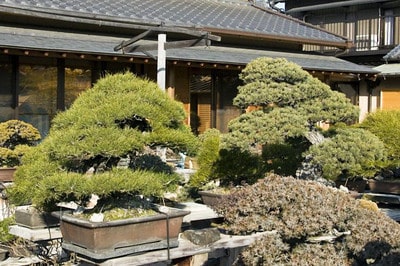
Matsu (Bob King photo)
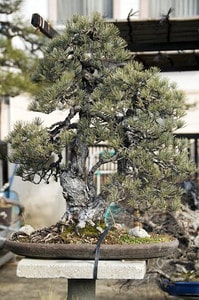
Goyomatsu (Bob King photo)
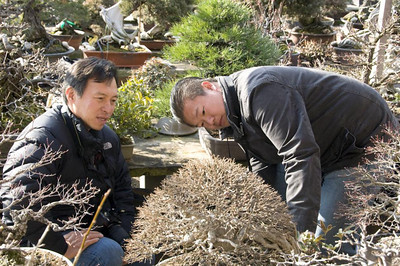
Boon and Peter contemplate awesome kaede ramification – really awesome ramification (Bob King photo)
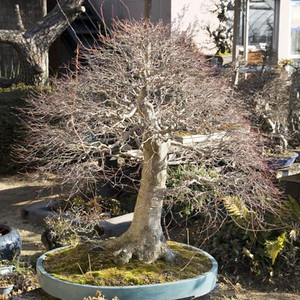
Momiji (Bob King photo)
It’s been fun working with other people’s photographs. Photos offer a glimpse of other people’s perspective. Among the photos of the outstanding trees at Aichi-en, I found several close-up shots of pine deadwood.
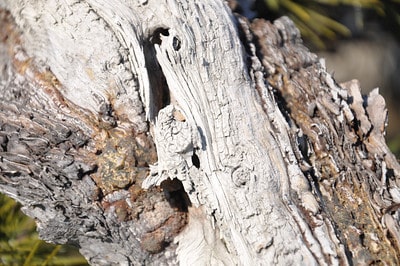
Pine deadwood
I’ve heard Boon talk a lot about the importance of the character of deadwood. It’s one thing to reveal shari by removing some bark or perform heavy carving to add interest to a piece of deadwood, and it’s another to display deadwood with age. The above photo is a great example of aged deadwood.
Subscribe to Bonsai Tonight
New Posts Delivered Every Tuesday and Friday